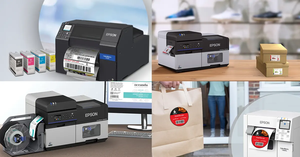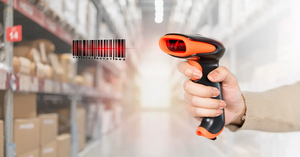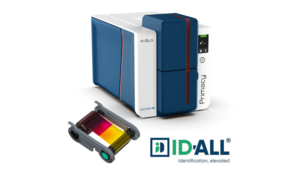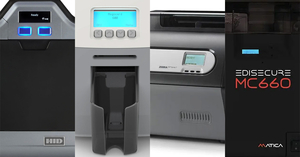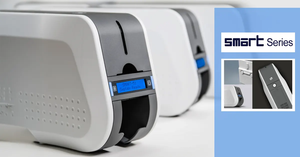Proximity Card Basics
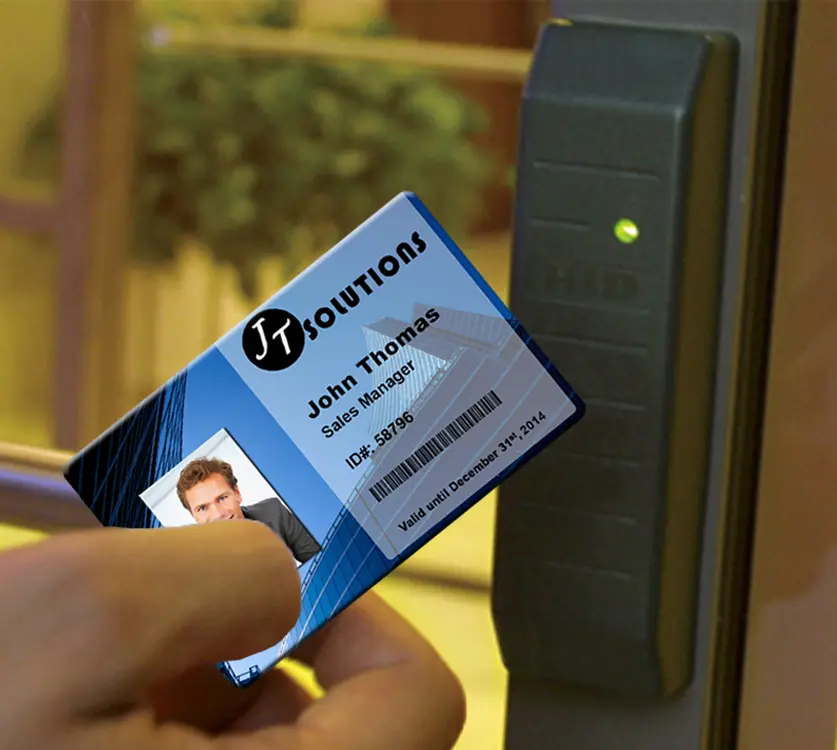
What is a proximity card?
Proximity cards (aka prox cards) are contactless read-only devices containing an antenna and integrated circuit embedded within the card itself–which contains the user's ID number and no other data (proximity cards can't hold any more data than a magnetic stripe card). The card can be “read” from a distance without inserting it into or passing it through a reader device. Cardholder data is instead read when the proximity card is passed within range of a reader–when briefly flashed near an electronic reader the number/data encoded in the card’s antenna is exchanged with the reader, identified and authenticated. The reader typically responds by beeping (indicating the card has been read) and signaling another device to permit access.
A proximity card and its reader communicate through 125 kHz radio-frequency fields, and a resonant energy transfer process. The reader unit’s antenna continuously transmits a short-range radio-frequency field.
Proximity cards have to be “programmed,” which can be done by your proximity card vendor, or can be done within your company if you have the right prox programming equipment on site. Proximity cards, once programmed, can be personalized by printing with your direct-to-card or retransfer printer.
Read Range – Depending on the reader, proximity cards can generally be read when held 3 to 20 inches from the reader. Because of this read range, proximity cards can often be read right through a wallet, purse or pocket as long as the card is in range.
Two Types of Proximity Cards
Passive Cards — These are the widely-used 125 kHz cards held within 20 inches of the reader. Powered by radio-frequency signals from the reader device, the range is limited and cards must be passed less than 20 inches to the reader unit.
Common Uses – Passive proximity cards are used to control physical access, such as keycards for access-control doors in buildings and environments where crowd control is an issue. They are also used to enable users to gain access to computer systems, networks, and other resources. They can also be used for varied purposes like email encryption, web access, and digital signatures.
Active Cards – These are often called “vicinity cards” because they feature an internal lithium battery that increases the read range up to six feet (2 meters) by amplifying the signal from the reader.
Common Uses – Active proximity cards are used for access-control circumstances in which getting within 20 inches of the reader is difficult, e.g., when a car is pulling into a parking enclosure and the reader is set back from the vehicle path.
How is a proximity card different from a “contactless smart card”?
Contactless smart cards are different from proximity cards, primarily because they can be encoded to hold much more data (like electronic funds balance for contactless payment systems, history data for Time & Attendance or biometric templates), and must be passed much closer to the reader (usually 2 to 10 cm or 1 to 3 inches) for their data to be read. Contactless smart cards use a 13.56 MHz radio frequency field.
Common Uses – Contactless smart cards are used for applications like library cards, contactless payment systems, and public-transit fare cards, time and attendance tracking. Contactless smart cards can be used for identification, authentication, and data storage, and enable simple business transactions to occur in a flexible, secure, standard way with minimal human intervention.
Combination Proximity and Contactless Smart card – HID iCLASS® Prox cards combine HID 125 kHz Prox and iCLASS® 13.56 MHz read/write contactless smart card technology in a single card to provide powerful access control devices.
Proximity cards can also have a magnetic stripe, which makes them multifunctional. A magnetic strip on a proximity card can hold other data intended to be read by a traditional card reader. Thus, for one function, say access to a facility, the card is read by a proximity reader, while for another function, say validating use of a computer system, the card is read by a swipe style reader. The magnetic stripe holds different data to validate the holder’s credentials for something else. Or, the magnetic stripe could hold the same data allowing for use in magnetic card readers.
Proximity cards and contactless smart cards are all proprietary, which means that card-reader manufacturers produce their own proprietary proximity cards to work with their readers only. There is no compatibility from one proximity card/reader brand to another. The proximity cards of one brand can’t be ready by another brand’s readers.
This means that when buying proximity cards, you have to buy cards that work with your organization’s card readers. If you’re just starting out with a proximity card program, you’ll have to use cards and readers that are compatible (which usually means of the same brand).
